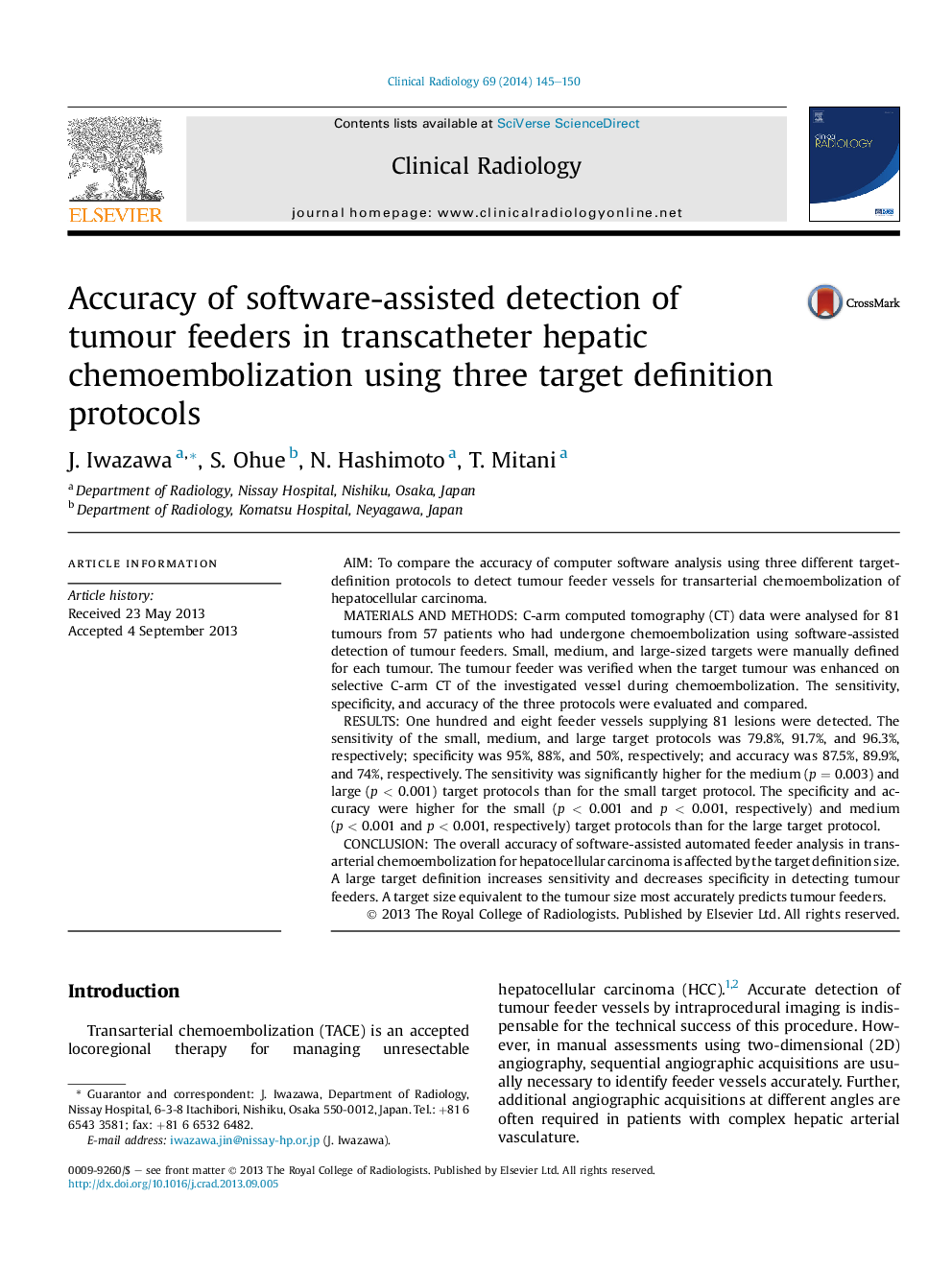| Article ID | Journal | Published Year | Pages | File Type |
|---|---|---|---|---|
| 3981475 | Clinical Radiology | 2014 | 6 Pages |
AimTo compare the accuracy of computer software analysis using three different target-definition protocols to detect tumour feeder vessels for transarterial chemoembolization of hepatocellular carcinoma.Materials and methodsC-arm computed tomography (CT) data were analysed for 81 tumours from 57 patients who had undergone chemoembolization using software-assisted detection of tumour feeders. Small, medium, and large-sized targets were manually defined for each tumour. The tumour feeder was verified when the target tumour was enhanced on selective C-arm CT of the investigated vessel during chemoembolization. The sensitivity, specificity, and accuracy of the three protocols were evaluated and compared.ResultsOne hundred and eight feeder vessels supplying 81 lesions were detected. The sensitivity of the small, medium, and large target protocols was 79.8%, 91.7%, and 96.3%, respectively; specificity was 95%, 88%, and 50%, respectively; and accuracy was 87.5%, 89.9%, and 74%, respectively. The sensitivity was significantly higher for the medium (p = 0.003) and large (p < 0.001) target protocols than for the small target protocol. The specificity and accuracy were higher for the small (p < 0.001 and p < 0.001, respectively) and medium (p < 0.001 and p < 0.001, respectively) target protocols than for the large target protocol.ConclusionThe overall accuracy of software-assisted automated feeder analysis in transarterial chemoembolization for hepatocellular carcinoma is affected by the target definition size. A large target definition increases sensitivity and decreases specificity in detecting tumour feeders. A target size equivalent to the tumour size most accurately predicts tumour feeders.
